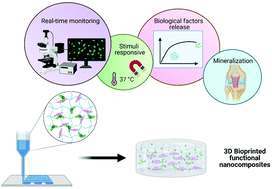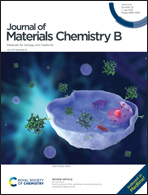Engineering next-generation bioinks with nanoparticles: moving from reinforcement fillers to multifunctional nanoelements
Abstract
The application of additive manufacturing in the biomedical field has become a hot topic in the last decade owing to its potential to provide personalized solutions for patients. Different bioinks have been designed trying to obtain a unique concoction that addresses all the needs for tissue engineering and drug delivery purposes, among others. Despite the remarkable progress made, the development of suitable bioinks which combine printability, cytocompatibility, and biofunctionality is still a challenge. In this sense, the well-established synthetic and functionalization routes to prepare nanoparticles with different functionalities make them excellent candidates to be combined with polymeric systems in order to generate suitable multi-functional bioinks. In this review, we briefly discuss the most recent advances in the design of functional nanocomposite hydrogels considering their already evaluated or potential use as bioinks. The scientific development over the last few years is reviewed, focusing the discussion on the wide range of functionalities that can be incorporated into 3D bioprinted constructs through the addition of multifunctional nanoparticles in order to increase their regenerative potential in the field of tissue engineering.

- This article is part of the themed collection: Journal of Materials Chemistry B Recent Review Articles


 Please wait while we load your content...
Please wait while we load your content...